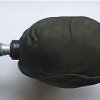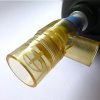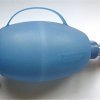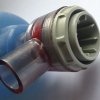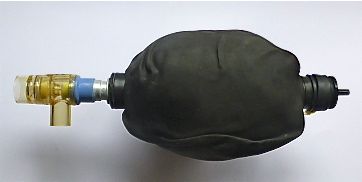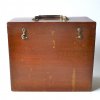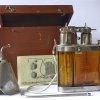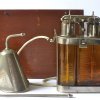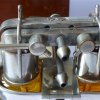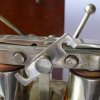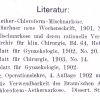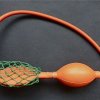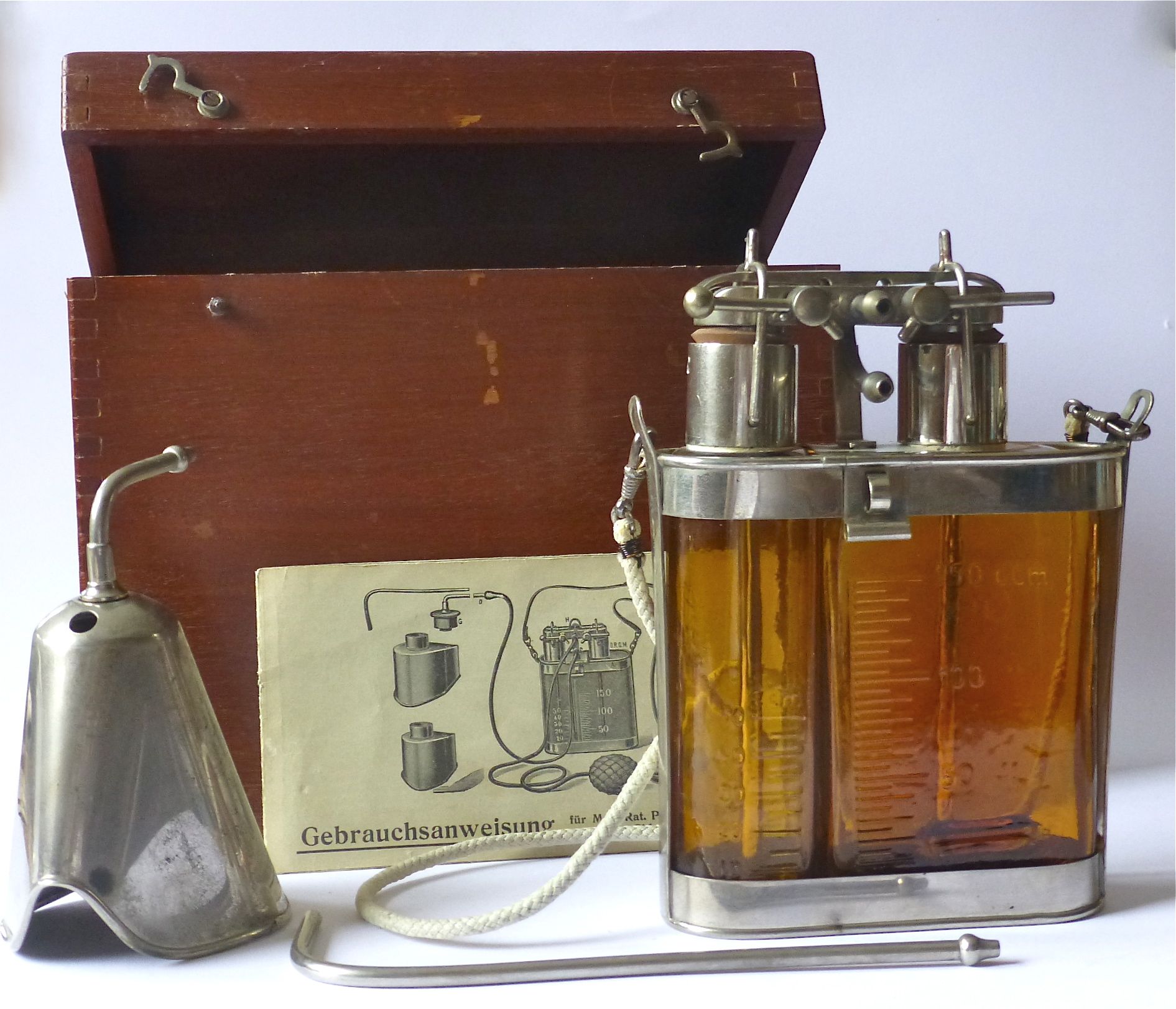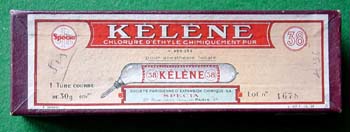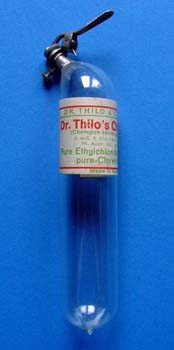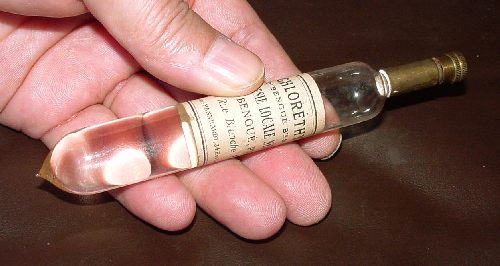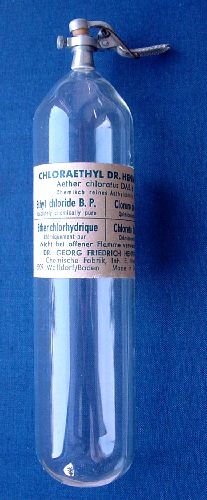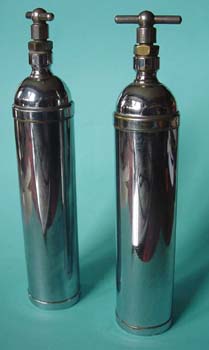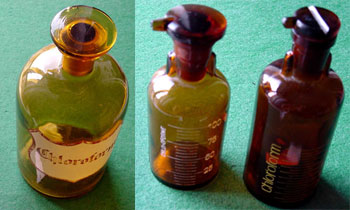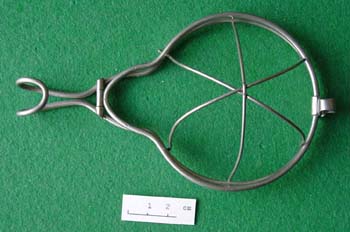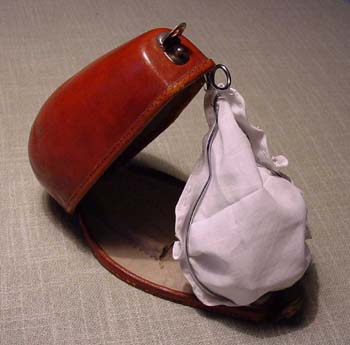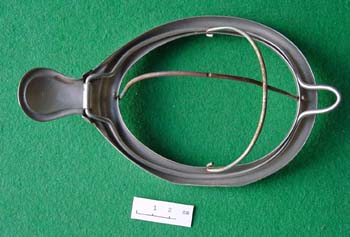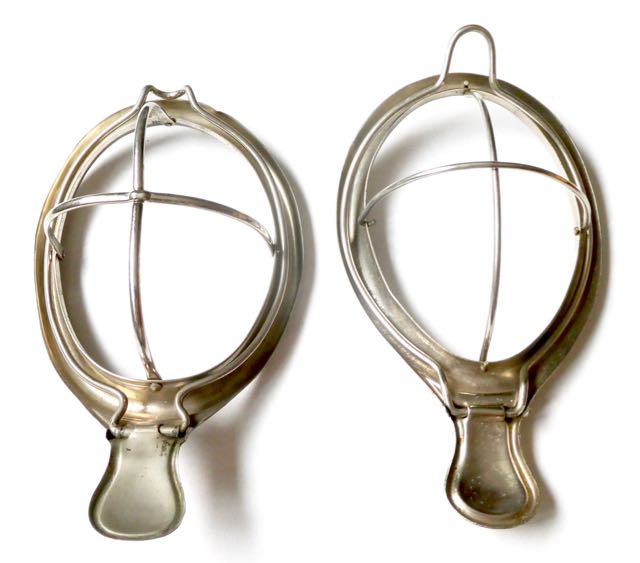Anesthesia |
||
AMBU-bag
|
||
For manual ventilation of patients with respiratory arrest or insufficient breathing. comes since the 50s, a "resuscitator" used.
|
Anesthesia |
||
BRAUN apparatus |
||
During his studies, Heinrich Friedrich Wilhelm BRAUN (1862-1934) performed in the surgical department under Prof. Carl Thiersch (1822-1895, surgeon in Leipzig) and - still a student - performed anesthesia. This experience developed with him the interest in anesthesia and its practical application.
The Braun ether-chloroform vaporiser was very frequently used during the first fifty years of the 20th century, mainly in the German speaking region. This primacy was principally involved by the simple management, the universal possibilities of application and the "expedient" combination of ether and chloroform: this term means the differential employment of these two substances for conducting individual anaesthesia. Heinrich Braun had published his method after extensive experimental studies, here briefly referred to; further reasons for the considerable success of the apparatus are discussed.
Lit.: - Brandt, Ludwig, Illustrierte Geschichte der Anästhesie, Wissenschaftliche Verlagsgesellschaft Stuttgart 1997 S.132. - Braun, H., Ueber Mischnarkosen und deren rationelle Verwendung (pp.136-170, 4 Abb.), in: Verh. Dtsch. Ges. Chir., 30. - Berlin 1901, 8°, LXIV, 222, 800 pp., Abb., 7 z.T. farb. lith. Taf.. - Braun H., Ueber Mischnarkosen und deren rationelle Verwendung. Arch Klin Chir 1901; 64: 201-235. - Goerig, Michael, Die Entwicklung des Narkosewesens in Deutschland, Steintor Verlag 2012 SS. 71-74. - Kühn, Curt, Ueber 200 Narkosen mit dem Braun'schen Aether-Chloroformgemisch, 1903, 21 Seiten - Narko: Apparat zur Aether-Chloroform-Mischnarkose nach Geh. Med.-Rat Prof. H. Braun; neues verbessertes Modell mit Luftstrom-Verteiler. C.G. Heynemann Fabrik Ärztlicher Instrumente, Verlag B . Georgi, 1902. - Weisser C., The Braun apparatus for mixed ether-chloroform anesthesia. A contribution to the early history of combination anesthesia, in: Anaesthesist. 1983 Aug; 32(8):369-73. |
Anesthesia |
||
Chloroethyl (1) |
||
|
Anesthesia |
||
Chloroethyl (2) |
||
A much used procedure for pain relief in small procedures was the "icing". For this purpose, volatile substances such as ether, chloroform and chloroethyl were used. RICHARDSON published in 1866 an etching device which allowed the skin to be rapidly cooled to -15 to -20 ° C by an air jet. Shortly afterwards, the German dentist Jean-Baptiste ROTTENSTEIN introduced chloroethyl for local anesthetics.
Presented is a bottle with an oblique outlet of the spray nozzle of Dr. med. THILO & Co.Chemische Fabrik, Mainz; around 1930. |
Anesthesia |
||
Chloroethyl (3) |
||
"Chloréthyle du Dr. Bengue Bte S.G.D.G. (bought on a flea market in Arlon on 6th of november 2005). |
Anesthesia |
||
Chloroethyl (4) |
||
HIPPOCRATES mentioned in his books that he used ice and snow before he started his operations. Dominique Jean LARREY (1766-1842) was able to perform amputations on half-frozen soldiers in sub-zero temperatures - cold as an anesthetic has a long tradition. The cold anesthetic spray "Chloraethyl Dr. HENNING" in its 100 ml spray bottle with lever lock is exported worldwide. The spray bottle produces a targeted jet for selective treatment of small areas of the skin, for example for icing of warts, sports injuries (strains, bruises, sprains), swelling and muscle cramps.
|
Anesthesia |
||
Chloroethyl (5) |
||
In 1895 a dentist noticed that not infrequently his patients fell asleep when he splashed chloroethyl (= chloroethane, chloraether) on their gums in order to locally stun them by icing. This narcotic effect was confirmed in many hospitals (Hildesheim, Zurich, Basel and Constance); The quick onset and fleeting sleep caused by chloroethyl was very well suited for brief interventions, especially since the odor of the preparation was much more pleasant than that of chloroform; Pulse and breathing were unaffected, the respiratory tract was not irritated, there was no excitation phase ...
The Luxembourgish legislation knew in 1959 the general anesthetic with chloroethyl:
|
Anesthesia |
||
Chloroform, drips |
||
Chloroform was dripped onto the mask by means of handy drip-bottles - well evenly, about every 2 seconds a drop was dropped.
|
Anesthesia |
||
Chloroform mask (1) |
||
The pleasant smell and less mucous membrane irritation of the chloroform immediately caused a wide distribution of this anesthetic, which proved particularly useful in obstetrics. Even VELPEAU in France, who in 1840 had said "éviter la douleur dans les opérations est une chimère qu'il n'est pas permis de poursuivre aujourd'hui", had himself converted to the new procedure. In 1853, for example, the English Queen Victoria was released in chloroform intoxication - the "anesthesia à la reine" became the hit of high society.
|
Anesthesia |
||
Chloroform mask (2) |
||
"In the last quarter of 1846, it was used to provide general anesthesia for surgical operations in the USA and Great Britain. Usage spread quickly but it is not easy to administer and unpleasant to inhale. About a year later chloroform was introduced; it seemed more 'patient friendly'. However, Chloroform has been able to shut down the heart of the strongest and healthiest man ... Chloroform remained in use!
The masks lay loosely in drawers and glass showcases in everyday clinical practice. The family doctor and the military surgeon, however, picked up the mask neatly in a sturdy leather bag that they carried with them over land: a pear-shaped leather case in which the mask, a LOMSKY dropper bottle, and a straight, flat tongue pliers could fit.
|
Anesthesia |
||
Chloroform mask (3a) |
||
Despite its liver toxicity, chloroform has long been a popular anesthetic. Sometimes, however, it had to go "without": "This morning the injured foot was amputated over the left knee over the knee." Because of his excessive state of weakness, the regretful could not be chloroformated, his condition is very questionable "(Luxemburger Wort, 16.5.1911).
|
Anesthesia |
||
Chloroform mask (3b) |
||
"SCHIMMELBUSCH- masks. Simple construction (around 1890) with bracket, frame and handle made of chromium suitable for an aseptic process, was covered with any desired size coating. For use with ether, an impermeable fabric was additionally pulled over the fine wire mesh.
|




